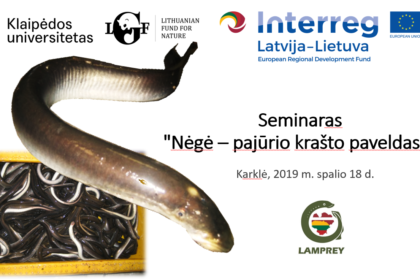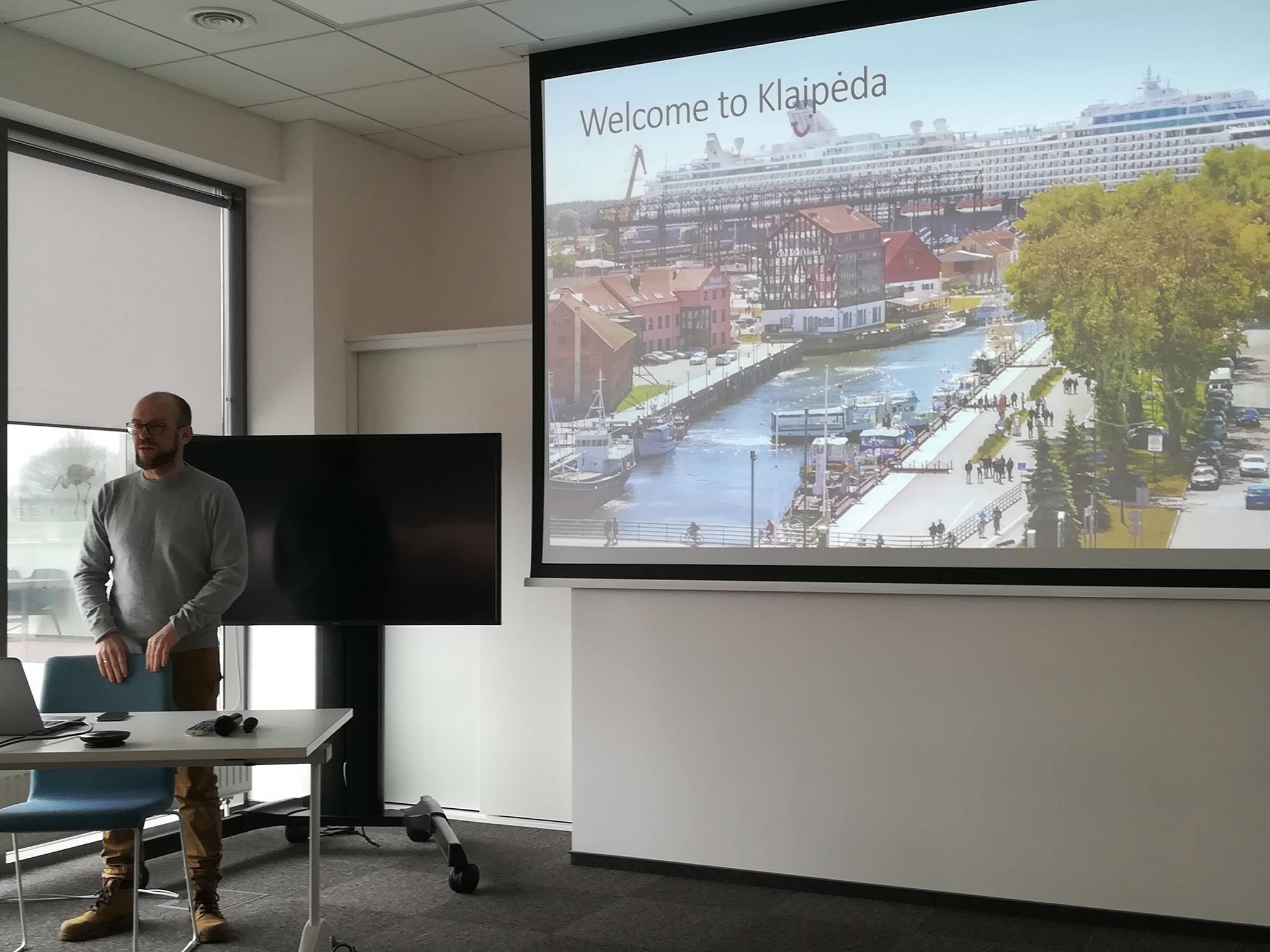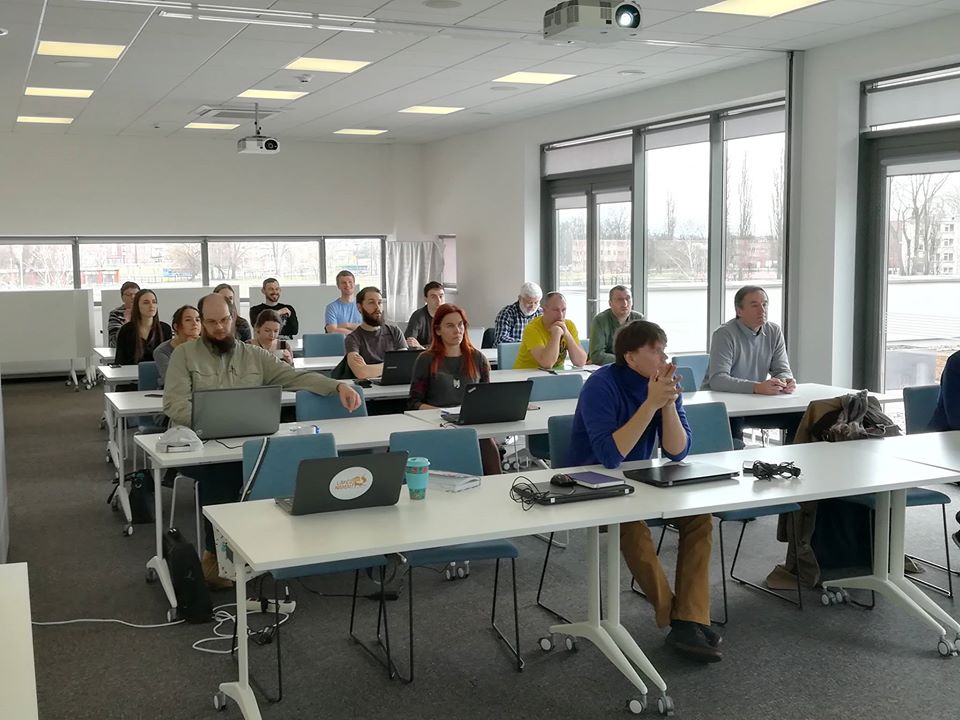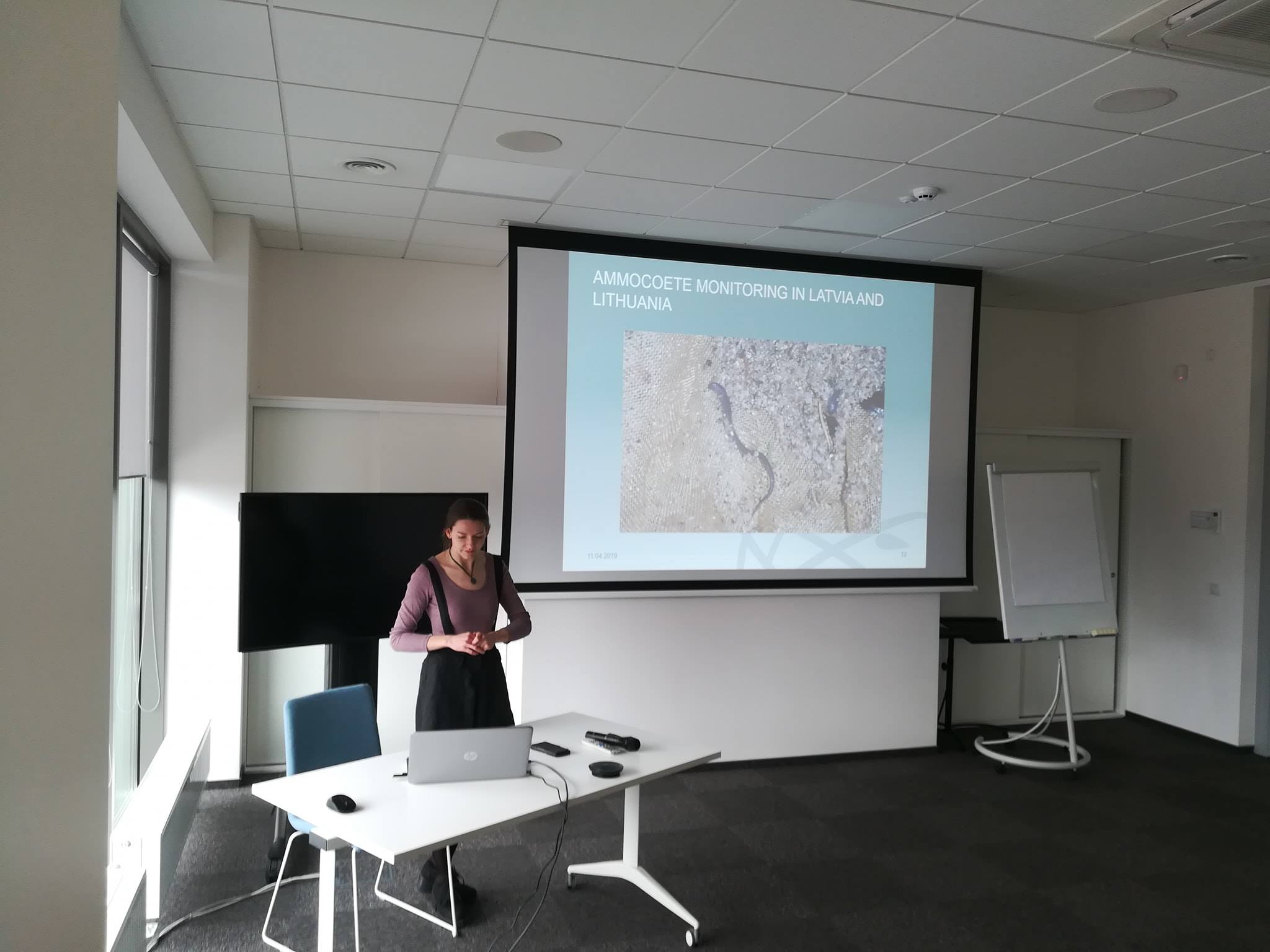25 August 2020
Discussions with lamprey stock management stakeholders in regional seminars on the importance of lamprey fishery in the coastal regions
Representatives of Klaipėda University and Lithuanian Fund for Nature within LAMPREY project organized two regional seminars, one in Karklė on October 18 and other in Rusnė on November 15, 2019 to meet with general stakeholders who exploit or are otherwise interested in lamprey stocks. Fishermen, representatives from Curonian Spit national park, Seaside regional and Nemunas delta regional parks admnnistration, tourism information centers, fish restaurants and processing SMEs, Lithuanian Sea Museum and other met for a discussion. All tried to find an answer to the question why lamprey have been forgotten as a traditional product in the region?
Lamprey – traditional dish of medieval royalty
In the old times lamprey was an important fish used for food in North America and Japan as well as in Europe. It turns out that to the ancient inhabitants of Lithuania Minor region, the most valuable fish was not the eel, but the river lamprey. Historical sources reveal that during the lamprey season restaurants in Lithuania Minor would raise a flag with seven or nine spots, because the lamprey has seven gill openings and two eyes. The fishes would be fried on a very low fire to preserve their fat. Smoked or marinated lampreys could be transported long distances (for example, to the territory that was Prussia at that time).
Latvians couldn‘t live without lamprey
In Latvia, near the Gauja River, the lamprey festival is held every year, and the small town Carnikava is called “the kingdom of lampreys“. It attracts thousands of gourmets from all over the country. In total, lamprey makes one third of all the fish species caught in Latvia‘s inner waters annually. Compared to other Europeans, Latvians also catch the biggest number of river lamprey.
Commercial fishing of river lamprey is popular in Sweden, Finland, Russia, Estonia, Latvia and Lithuania, but only in Latvia and Finland this fish has a high economic value.
In the sixties Latvia‘s lamprey catches were up to 400 tons annually. Gradually the numbers dropped and today 70 tons per year is a common number in Latvia. In Lithuania, on the contrary, the catches have never passed the number of 50 tons annually. Now the very few commercial fishermen catch approximately up to 5 tons of lamprey each year, although the prices of lamprey have already started to grow. In Latvia at the moment, 1 kilogram of lamprey costs 25 euros. In Lithuania one kilogram of fresh, untreated lamprey costs 6 euros.
Klaipėda region lacks a traditional fish dish
A tourist guide for Klaipėda (in German Führer durch Memel und Umgebung), written approximately 100 years ago, recommends walking down “Luisenstrasse“ (now – famous Danės street) and searching for banners with seven or nine dots. This sign means that a bar has lamprey and can serve it with a bottle of port wine.
But why today so few restaurants have dishes from this local freshly caught fish? During the discussion fishermen suggested that the smell of lampreys being fried is unpleasand and the look of the fish is repulsive, and these may be important reasons.
“If someone had given me to eat the grundal in my childhood – perhaps I‘d still eat it today. Nobody had. That‘s why I do not like the taste. But Ukrainians eat grundal and ask for more. I think the same applies to lamprey and Latvians, who are just accustomed to eating lamprey from the childhood“ – said Remigijus Dailidė, the representative from Klaipėda Sea Museum.
Although a Lithuanian restaurant “Šturmų švyturys“ has recently revived “Lamprey days“ and its representatives say there are enough visitors ordering this unusual product, other restaurants may be discouraged from following its example because of the price: 6-9 euros per kilogram. And if in Latvia there is always someon willing to have a lamprey dish, in Lithuania such guests may not show up at all. Representatives from Lithuanian fish restaurants admitted that there‘s isn‘t much demand for lamprey, but this could change
“We do not have demand for lamprey at the moment. But the demand could be increased. Remember the smelt case fifteen years ago – no one regarded it as a delicacy. Then the “Smelt feast“ was started and, year by year it kept growing in popularity. Now just look at the crowds during this feast in Palanga“, – said the owner of the fish restaurant “Žuvinė“, Edmundas Sakalauskas.
The leader of Klaipėda culture and information center Ana Timonina Mickevičienė emphasized that tourists usually ask which traditional dish they could taste in Klaipėda. And the answer is usually “Cepelinai!“ (traditional Lithuanian potatoe dumplings), despite the fact that they are common all over Lithuania, but not characteristic to this region.
“I was in Turkey to present our country and food. They asked: “What is your traditional fish? Or sea food?“ I said that we didn‘t have one. They couldn‘t believe it. Just imagine, that lamprey could become a traditional meal of Klaipėda“, – said Ana Timonina Mickevičienė.
Possibilities for a traditional lamprey feast
In Lithuania lamprey is caught in only a few spots: the Šventoji River, the Curonian lagoon and Nemunas’ downstream. Almost 100 percent of the catch is sold to Latvians.
Lamprey fishermen Rokas Radzvilavičius has 25 ropes with a various numbers of special fishing tools “bučiukai”, tied to them. He is confident that there’s no need to raise catch limits for lamprey fishing, because the ones that are set currently are not reached.
The leader of Sala (local village) ethnical and informational center Birutė Servienė admitted that lamprey was a traditional product in the old days, but specific cooking traditions have been lost. Lampreys used to be cooked on blocks of peat.
“In Latvia, on the Christmas table there must be a lamprey dish must – just like here in Lithuania we all have this 12 dishes tradition. But lamprey fishing season is very short – they start migrating just couple of months after the first frost”, – says B. Servienė.
As mentioned earlier, the price of lamprey in Latvia is much higher – in this situation the market prompts the solution: all lamprey, caught in Lithuania, is sold to Latvians, because people in Lithuania do not have the culture of consuming this fish.
“Why not make a festival now? At the moment, while we are waiting for Christmas to come, no festivals are planned in this region. The Smelt feast will only be held in February”, – suggested Algimantas Dirsė, the leader of the company “Atmatos upė”. He also spoke about the traditional Šaktarpio feast in Rusnė, which started from a few rural tourism homesteads celebrating and visiting each other to share a meal and a drink.
In Latvia the Lamprey festival is held in August – the time for it is unusual, because there are no fresh lampreys at this time of year. Perhaps August was chosen because there are still lot of tourists in the coastal regions.
Fishermen and the leader of “Atmatos upė” urged the local restaurants “Prie Peterso tilto” and “Dreverna” to organize a lamprey feast already this year.







